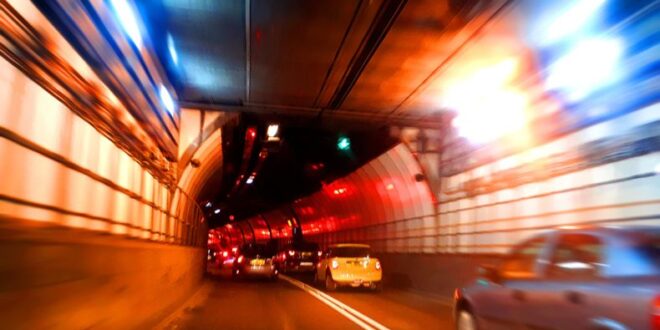The Blackwall Tunnel, a crucial transportation route in London, connects the bustling areas of Greenwich and Tower Hamlets. This iconic tunnel, with its rich history and significant role in the city’s infrastructure, is much more than just a road link. Whether you’re a Londoner or a visitor navigating through the city, understanding the Blackwall Tunnel can enhance your travel experience. In this guide, we’ll explore its history, significance, and practical tips for using this vital tunnel.
History of the Blackwall Tunnel
1. Early Beginnings and Construction
The Blackwall Tunnel was conceived to alleviate traffic congestion caused by ferry crossings on the Thames River. The original Blackwall Tunnel, opened in 1897, was a significant engineering feat of its time. Designed by Sir Maurice Fitzmaurice, it was the first underwater tunnel built in the UK and provided a vital link for road traffic between the north and south banks of the Thames.
The need for further improvements led to the construction of a second tunnel, which opened in 1967. This newer tunnel was built to handle increasing traffic demands and is often referred to as the “New Blackwall Tunnel.”
2. The Role of the Tunnel in London’s Transport Network
The Blackwall Tunnel plays a critical role in London’s transport infrastructure. It facilitates the movement of vehicles across the River Thames, connecting key areas and easing congestion on other routes. The tunnel is a key link in the A12 road, which provides access to the City of London, Docklands, and other important locations.
Key Features of the Blackwall Tunnel
1. Design and Structure
The Blackwall Tunnel consists of two parallel tubes—one for each direction of traffic. The original tunnel, built in the late 19th century, is approximately 1.5 miles long, while the newer tunnel is slightly longer. Both tunnels feature ventilation systems, lighting, and emergency exits to ensure safety and efficiency.
2. Traffic Management and Usage
The Blackwall Tunnel is a busy route, with a significant volume of traffic passing through daily. To manage traffic flow and ensure safety, the tunnel employs a range of measures, including variable speed limits, traffic cameras, and regular maintenance checks. The tunnel is subject to height and width restrictions, and certain types of vehicles, such as hazardous goods lorries, are prohibited from using it.
3. Modern Upgrades and Maintenance
Over the years, the Blackwall Tunnel has undergone various upgrades to meet modern standards. These improvements include enhanced safety features, better lighting, and improved ventilation systems. Regular maintenance ensures the tunnel remains safe and functional for daily commuters.
Navigating the Blackwall Tunnel
1. Understanding the Traffic Flow
Traffic in the Blackwall Tunnel can be heavy, particularly during peak hours. It’s essential to check traffic updates before your journey to avoid delays. The tunnel is equipped with electronic signs that provide real-time information about traffic conditions and any incidents.
2. Toll Charges and Fees
The Blackwall Tunnel itself does not have a toll charge. However, there are congestion charges in certain areas of London that may affect your journey if you’re driving a vehicle into central London.
3. Accessibility and Safety Tips
The tunnel is accessible for various types of vehicles, but it’s crucial to adhere to height and weight restrictions. Ensure your vehicle complies with these requirements to avoid fines or safety issues. Follow the tunnel’s safety protocols, including emergency procedures and speed limits.
FAQ About the Blackwall Tunnel
Q: How long is the Blackwall Tunnel?
A: The original Blackwall Tunnel is approximately 1.5 miles (2.4 kilometers) long, while the newer tunnel is slightly longer.
Q: Can I use the Blackwall Tunnel for all types of vehicles?
A: The Blackwall Tunnel has height and width restrictions. Certain vehicles, such as those carrying hazardous goods, are prohibited from using the tunnel. Always check the regulations before entering.
Q: Are there any tolls for using the Blackwall Tunnel?
A: No, there are no tolls for using the Blackwall Tunnel. However, be aware of congestion charges that may apply in central London areas.
Q: How can I get real-time traffic updates for the Blackwall Tunnel?
A: Real-time traffic updates for the Blackwall Tunnel can be accessed through various traffic apps, websites, and electronic signs located near the tunnel entrance.
Q: Is the Blackwall Tunnel open 24/7?
A: Yes, the Blackwall Tunnel is open 24/7. However, it may be closed temporarily for maintenance or emergencies. Always check for any scheduled closures or maintenance updates before traveling.
Q: What should I do in case of an emergency in the Blackwall Tunnel?
A: In case of an emergency, follow the tunnel’s safety procedures, use the emergency telephones, and wait for assistance. The tunnel is equipped with emergency exits and response systems to handle such situations.
Read more Janet Jackson: A Comprehensive Look at the Iconic Superstar
Conclusion
The Blackwall Tunnel is more than just a transportation route; it’s a vital part of London’s infrastructure with a rich history and significant role in easing traffic congestion. Whether you’re a local or a visitor, understanding its history, features, and practical tips can enhance your travel experience. As you navigate through London, the Blackwall Tunnel remains a key link that connects various parts of the city, contributing to smoother and more efficient journeys across the Thames.

